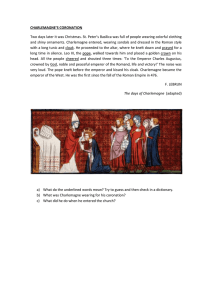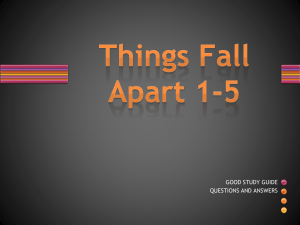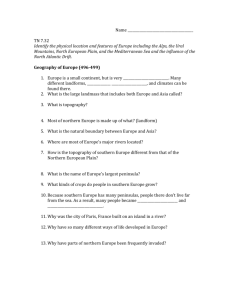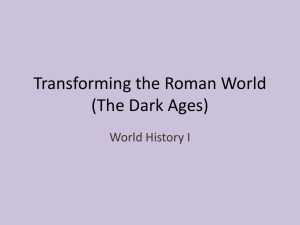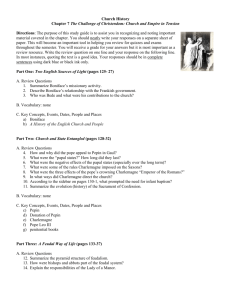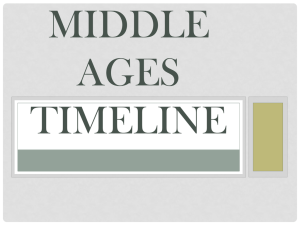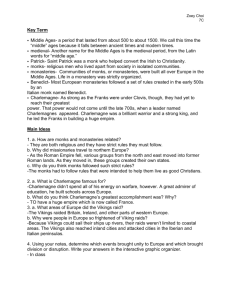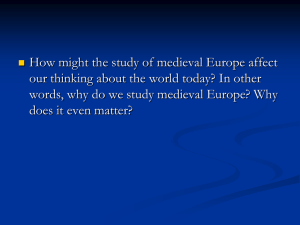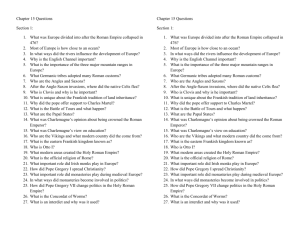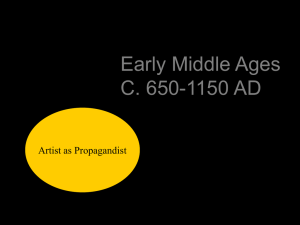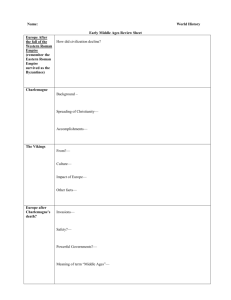Chapter 5 Notes
advertisement
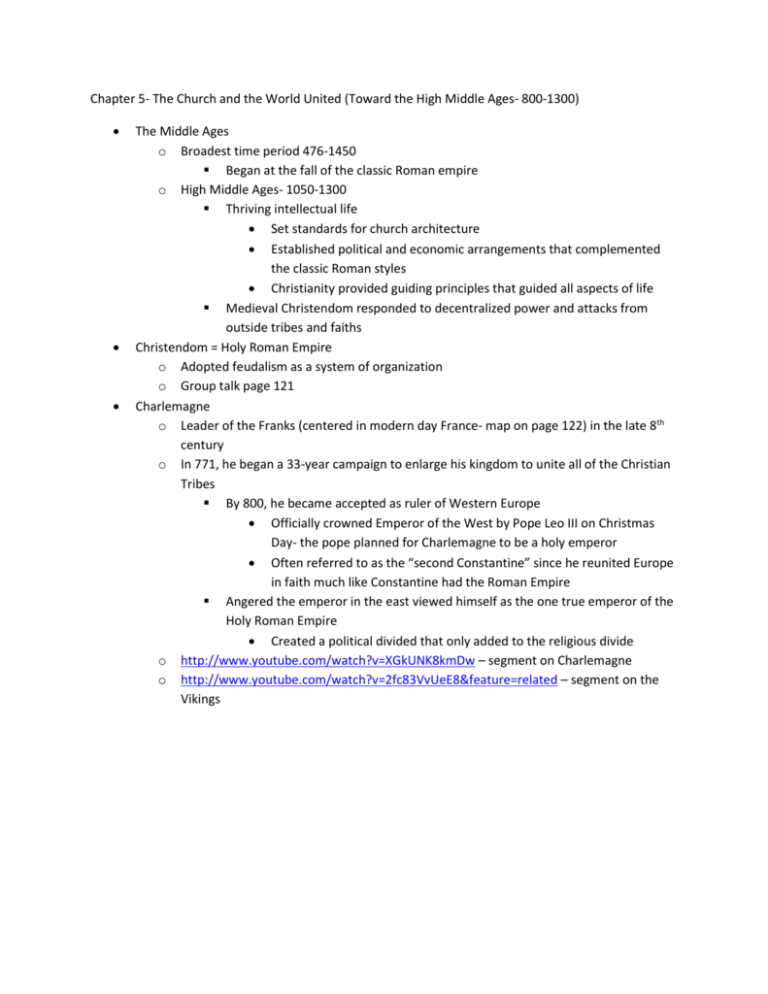
Chapter 5- The Church and the World United (Toward the High Middle Ages- 800-1300) The Middle Ages o Broadest time period 476-1450 Began at the fall of the classic Roman empire o High Middle Ages- 1050-1300 Thriving intellectual life Set standards for church architecture Established political and economic arrangements that complemented the classic Roman styles Christianity provided guiding principles that guided all aspects of life Medieval Christendom responded to decentralized power and attacks from outside tribes and faiths Christendom = Holy Roman Empire o Adopted feudalism as a system of organization o Group talk page 121 Charlemagne o Leader of the Franks (centered in modern day France- map on page 122) in the late 8th century o In 771, he began a 33-year campaign to enlarge his kingdom to unite all of the Christian Tribes By 800, he became accepted as ruler of Western Europe Officially crowned Emperor of the West by Pope Leo III on Christmas Day- the pope planned for Charlemagne to be a holy emperor Often referred to as the “second Constantine” since he reunited Europe in faith much like Constantine had the Roman Empire Angered the emperor in the east viewed himself as the one true emperor of the Holy Roman Empire Created a political divided that only added to the religious divide o http://www.youtube.com/watch?v=XGkUNK8kmDw – segment on Charlemagne o http://www.youtube.com/watch?v=2fc83VvUeE8&feature=related – segment on the Vikings Monday, January 31 What did we take from the movies on Charlemagne and the Vikings? Charlemagne notes not in movie o Page 125 Attempts to establish a procedure by which the canons (priest that service a cathedral) choose the bishops and the monks or nuns of an abbey select their own leader Also instituted stricter rules for religious in order to insure that they were living a devout life. Enacted laws against heresy and fought against the biggest group of nonChristians in his empire the Saxons After he defeated them, Charlemagne offer them baptism or death as a consequence Chaos Reigns o With Charlemagne’s death the empire began to split into smaller territories with independent rulers that began to fight with one another o Two groups began to raid Western Europe The Saracens (nomadic Muslims) Raided southern Italy o Succeeded in overtaking Rome Forced the pope to build a wall around Rome in order to protect the people The Magyars Raided Western Europe and eventually settled in modern-day Hungary The Vikings o Notes form movie Feudalism o Diagrams on board/ movie segment (http://player.discoveryeducation.com/index.cfm?guidAssetId=C8204E09-9A6E-49959576-AE4419E32E52&blnFromSearch=1&productcode=US) Theoretically the medieval kings held absolute power In reality they were dependent on those below them for peace and prosperity o Since the armies no longer existed in large numbers, the poor and smaller land owners were dependent on the greater lord for protection. They paid taxes to the Lord or king who promised protection in return. Troubles and Triumphs o Chart on page 128 o Group Talk A Time of Reform o Cluny and the Reform of Monastic Life Cluny is a small town in Southern France owned by Duke William of Aquitaine The duke gave the land to a monk named Berno so he could build a monastery o In the deed the land was given to “Saint Peter and Saint Paul.” The pope as St. Peter successor was to maintain the land but did not own the land. This placed the monastery under the direction of the pope but allowed the monks to maintain and operate the monastery on a day-to-day level and to elect their abbot William wanted to free the monastic system from the corruption he had seen develop after the Vikings had pillage all of the towns o His attention was to have the monasteries be a place of authentic prayer and spiritual life Abbott Berno used the charism and guide of St. Benedict They lived simply living a life of prayer and work o They prayed 5-6 times a day reciting the Divine Office or the Liturgy of the hours http://divineoffice.org/
